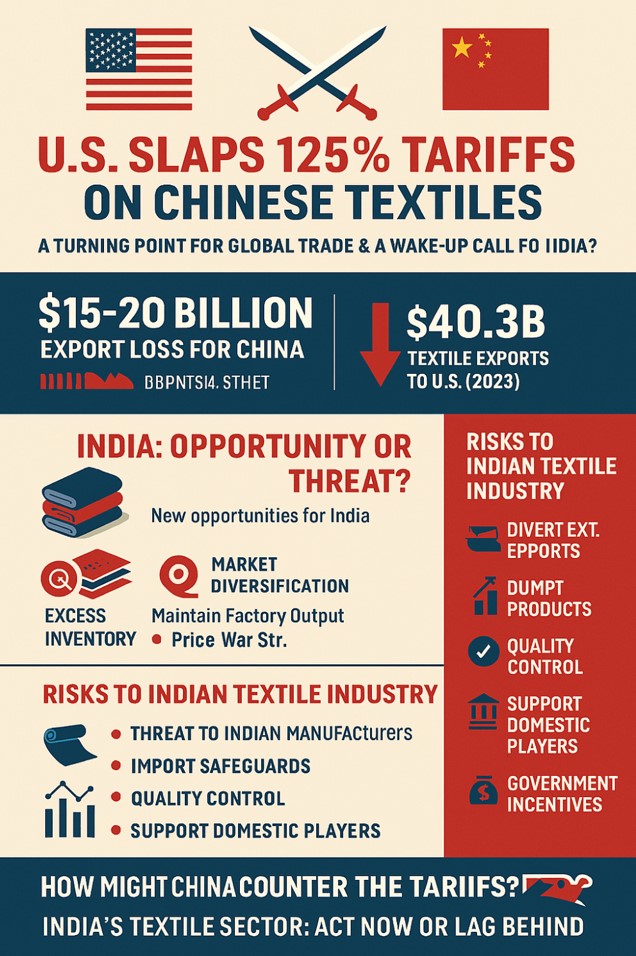1. Export Slowdown
Tariffs on Chinese garments—especially from the U.S.—make Chinese-made clothing more expensive for foreign buyers. This leads to a drop in international demand, particularly from major markets, causing a decline in exports and revenue for manufacturers.
2. Supply Chain Disruption
Many raw materials used in garment production (like cotton, synthetic fibers, dyes, and accessories) are imported. Tariffs on these materials increase input costs, disrupting production schedules and squeezing profit margins.
3. Shift of Orders to Competing Countries
Global brands and retailers may move their sourcing to countries such as Vietnam, Bangladesh, and India, where tariff barriers are lower or non-existent. This results in a loss of global competitiveness for Chinese manufacturers.
4. Factory Closures and Job Losses
Smaller factories or those already operating on thin margins may be unable to absorb the losses caused by reduced orders and rising costs. This can lead to mass layoffs, factory closures, and rising unemployment in the garment sector.
5. Market Diversification Efforts
In response, Chinese exporters often seek to diversify into new markets like Africa, Latin America, and Southeast Asia, or strengthen domestic sales channels to reduce dependence on tariff-affected countries.
6. Upgrading and Innovation
To survive the impact of tariffs, many manufacturers focus on improving product quality, automation, and innovation. Some shift from basic manufacturing (OEM) to more advanced models like ODM (original design) or OBM (own brand), climbing the value chain.
7. Currency Adjustments
The Chinese government may allow the yuan to weaken slightly to make exports cheaper and more attractive. However, this strategy has limited effectiveness and can have broader economic implications.

